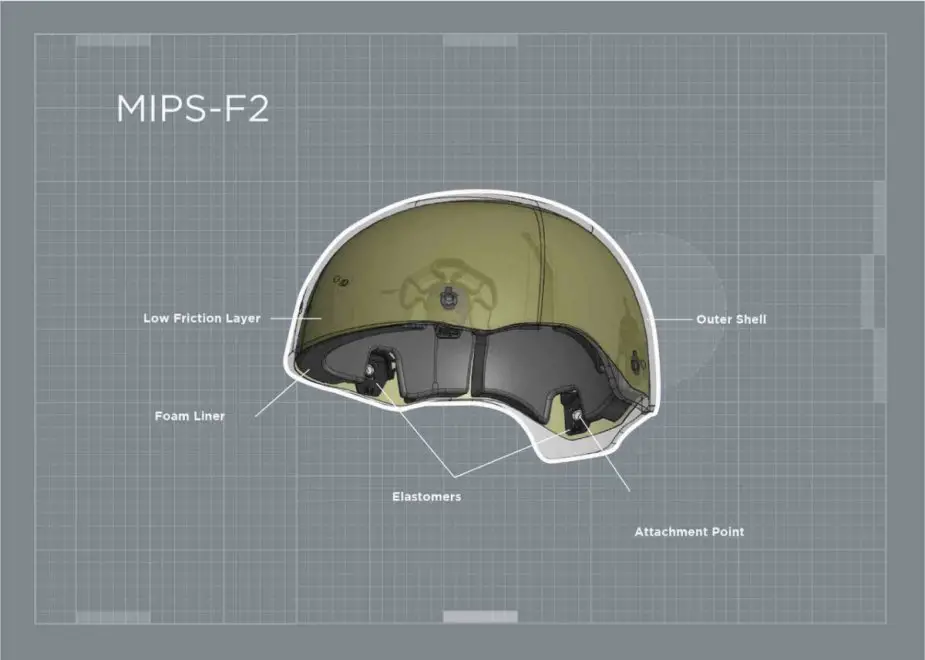MIPS to drive brain injury awareness with new products and armed forces support
MIPS, the leading brain safety system company, is working to drive a new understanding of the severity and seriousness of traumatic brain injuries like concussions, DAI (Diffuse Axonal Injury) and subdural hematoma, particularly with armed forces and law enforcement personnel. MIPS is developing new helmets in partnership with established ballistic helmet brands in order to better serve those who serve us on the front lines of conflicts around the world and at home.

MIPS F2, a new impact liner for ballistic helmets (Picture source: MIPS)
"The human brain is soft, and its tissues are subject to tearing, especially when the head is impacted from an angle," says Dr. Hans von Holst, senior neurosurgeon, professor and MIPS advisor. "Since rotation is the nature of most impacts, it's possible to get a potentially serious brain injury despite wearing a helmet. With a MIPS-equipped helmet, you get both a significant reduction in the rotational motion that causes that tearing of the brain tissue, while also getting protection for the skull itself."
As with sports and other aspects of civilian life, we're seeing a broader adoption of standards for prevention of brain injuries and subsequent recovery once a brain injury takes place. This is especially true in the armed forces, where traumatic brain injuries (TBI) can lead to post-traumatic stress disorder (PTSD).
The US Department of Veterans Affairs' National Center for PTSD states "The conflicts in Afghanistan and Iraq (OEF/OIF) have resulted in increased numbers of veterans who have TBI. The Department of Defense along with the Defense and Veterans Brain Injury Center (DVIBC) estimate that 22% of all OEF/OIF combat wounds are brain injuries. This is compared to TBI in 12% of combat wounds that occurred in Vietnam." They further state that "From 60-80% of service members who are hurt in other ways by a blast may have a TBI," confirming that an active duty injury can also carry neurological problems beyond what's immediately obvious.
The Center for Disease Control (CDC) reinforces this, citing studies finding "approximately one-third of Service Members (SMs) with mild TBI also have PTSD. These neuropsychiatric and emotional disorders might create the most serious challenges to returning to work or other pre-injury activities and to community reintegration." Depression, anxiety, suicidal tendencies, and tendencies towards disinhibition and substance abuse have also been reported following TBI. Longer-term, the CDC cites additional brain injury symptoms like post-traumatic seizures, epilepsy, and possibly the development of Alzheimer's disease, dementia, and chronic traumatic encephalopathy.
The DVBIC has identified TBI as "a major focus, second only to recognition of the need for increased resources to provide health care and vocational retraining for individuals with a diagnosis of TBI, as they transition to veteran status." They cite 383,947 active duty service members with a diagnosis of first-time TBI since 2000." Their A Head For The Future initiative seeks to help servicemen and women prevent, recognize, and recover from brain injuries for themselves, their unit, and their family.
Look for prototype helmets featuring MIPS in 2019, for both armed forces and law enforcement personnel. Currently, MIPS is developing the partnerships and product integrations that would lead to a new way to help prevent brain injuries as early as next year.


























